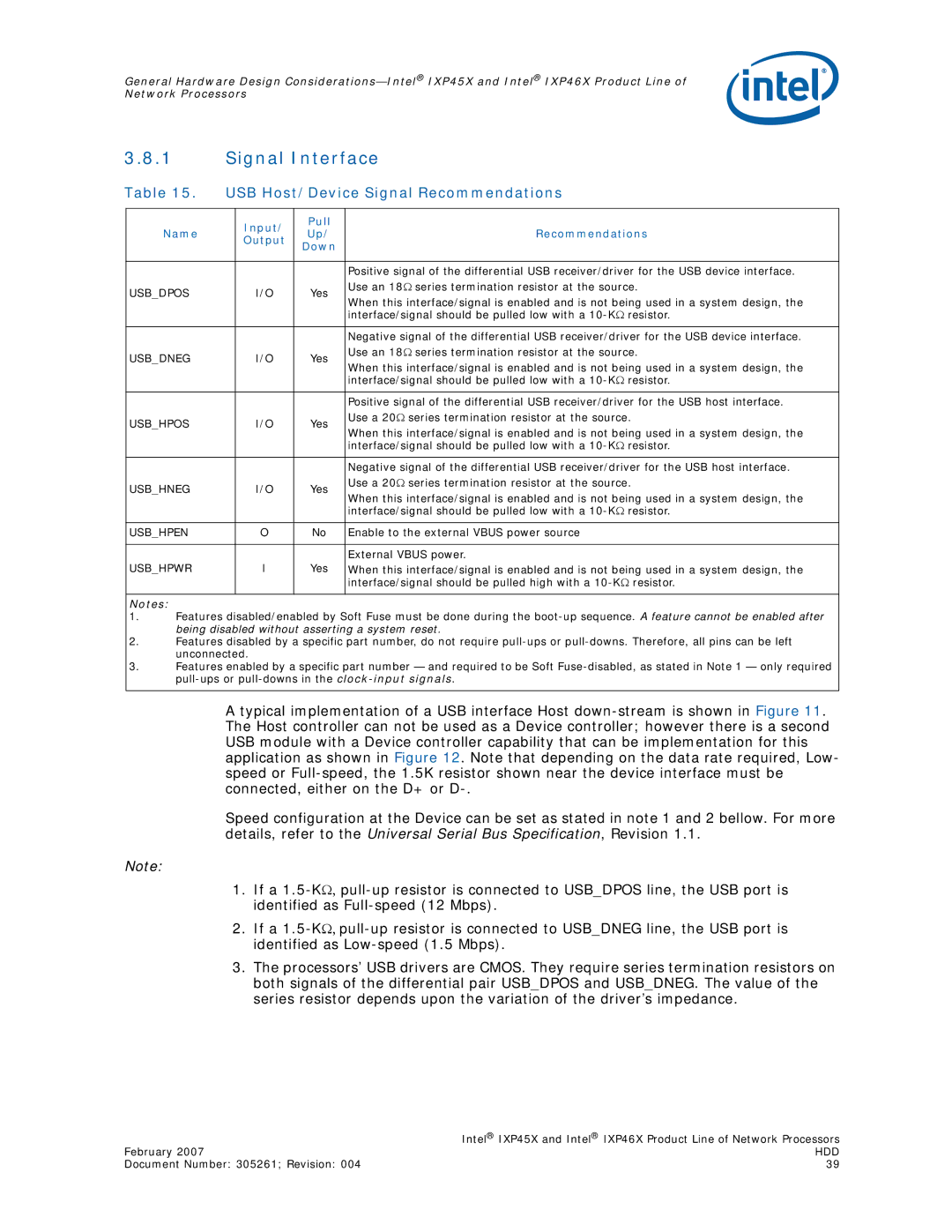
General Hardware Design
3.8.1Signal Interface
Table 15. | USB Host/Device Signal Recommendations | ||||
|
|
|
|
|
|
|
|
| Input/ | Pull |
|
| Name |
| Up/ | Recommendations | |
|
| Output | |||
|
|
| Down |
| |
|
|
|
|
| |
|
|
|
|
|
|
|
|
|
|
| Positive signal of the differential USB receiver/driver for the USB device interface. |
USB_DPOS |
| I/O | Yes | Use an 18Ω series termination resistor at the source. | |
| When this interface/signal is enabled and is not being used in a system design, the | ||||
|
|
|
|
| |
|
|
|
|
| interface/signal should be pulled low with a |
|
|
|
|
|
|
|
|
|
|
| Negative signal of the differential USB receiver/driver for the USB device interface. |
USB_DNEG |
| I/O | Yes | Use an 18Ω series termination resistor at the source. | |
| When this interface/signal is enabled and is not being used in a system design, the | ||||
|
|
|
|
| |
|
|
|
|
| interface/signal should be pulled low with a |
|
|
|
|
|
|
|
|
|
|
| Positive signal of the differential USB receiver/driver for the USB host interface. |
USB_HPOS |
| I/O | Yes | Use a 20Ω series termination resistor at the source. | |
| When this interface/signal is enabled and is not being used in a system design, the | ||||
|
|
|
|
| |
|
|
|
|
| interface/signal should be pulled low with a |
|
|
|
|
|
|
|
|
|
|
| Negative signal of the differential USB receiver/driver for the USB host interface. |
USB_HNEG |
| I/O | Yes | Use a 20Ω series termination resistor at the source. | |
| When this interface/signal is enabled and is not being used in a system design, the | ||||
|
|
|
|
| |
|
|
|
|
| interface/signal should be pulled low with a |
|
|
|
|
| |
USB_HPEN |
| O | No | Enable to the external VBUS power source | |
|
|
|
|
|
|
|
|
|
|
| External VBUS power. |
USB_HPWR |
| I | Yes | When this interface/signal is enabled and is not being used in a system design, the | |
|
|
|
|
| interface/signal should be pulled high with a |
|
|
|
|
| |
Notes: |
|
|
|
| |
1. | Features disabled/enabled by Soft Fuse must be done during the | ||||
| being disabled without asserting a system reset. | ||||
2. | Features disabled by a specific part number, do not require | ||||
| unconnected. |
|
| ||
3. | Features enabled by a specific part number — and required to be Soft | ||||
| |||||
|
|
|
|
|
|
A typical implementation of a USB interface Host
Speed configuration at the Device can be set as stated in note 1 and 2 bellow. For more details, refer to the Universal Serial Bus Specification, Revision 1.1.
Note:
1.If a
2.If a
3.The processors’ USB drivers are CMOS. They require series termination resistors on both signals of the differential pair USB_DPOS and USB_DNEG. The value of the series resistor depends upon the variation of the driver’s impedance.
| Intel® IXP45X and Intel® IXP46X Product Line of Network Processors |
February 2007 | HDD |
Document Number: 305261; Revision: 004 | 39 |
